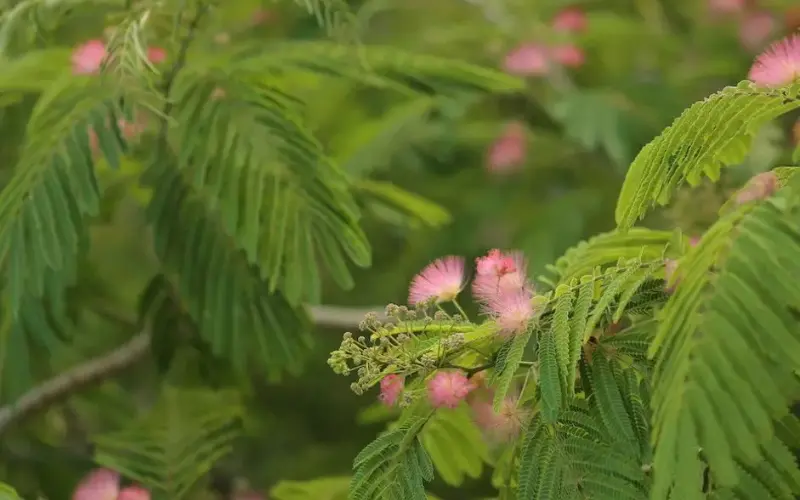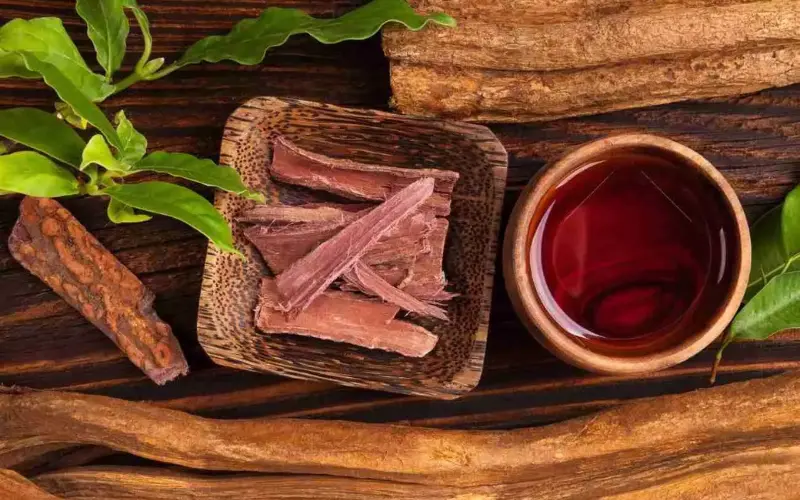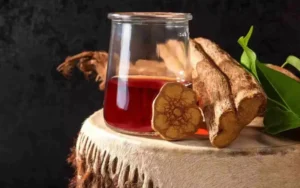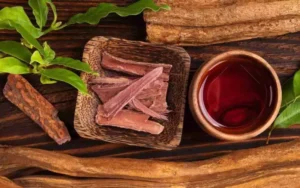Mimosa Hostilis is not just an exotic plant; it is a source of ancestral knowledge and a powerful ally in the natural world. From its roots are extracted compounds used in tincture, cosmetics and personal wellness. In this article we explain everything you need to know about Mimosa Hostilis, what it is, what its benefits are and why it has become such a sought-after ingredient worldwide.
Mimosa hostilis is an evergreen tree or shrub that grows natively in the forests of Brazil and Mexico, including Central and South America, Honduras, Colombia, Venezuela, Panama, Salvador. Formerly, it was known as mimosa tenuiflora, although in other places it was recognized as Jurema, Jurema Preta, among others.
It was used as an ingredient in the preparation of concoctions, but this was abandoned with the passage of time by the colonizers. Currently, it is a component used to provide skin rejuvenation and strengthen hair. Likewise, it contains properties necessary to treat wounds and burns. If you want to know how to identify mimosa hostilis, properties, uses, and much more, this article will be of interest to you. Let’s get started!
What is mimosa hostilis?

Miimosa Hostilis, known scientifically as Mimosa Tenuiflora, is a plant that grows in Mexico, Brazil and Central America. Naturally, the mimosa is typical of an ecosystem with a tropical deciduous forest, where the rains are inclement and occur in dry and prolonged seasons. It can be found in hostile terrains or on the margins of roads, and it is a shrub that grows strong and resistant.
In relation to it´s flower it is small and has hairs, where its fruits and pods grow. But, the bark and roots are the part where most of its medicinal qualities are found and are currently used to treat skin problems, scalp, and burns.
Properties about mimosa hostilis
- Helps to treat burns and various skin conditions.
- Eliminates microbial infections.
- It serves to strengthen the scalp.
- It rejuvenates the skin.
- Used as a treatment for herpes, ulcers and acne.
- Provides relief from hemorrhages.
- It has analgesic and anti-inflammatory substances.
How to identify mimosa hostilis?
This tree reaches a large size and can reach up to eight meters high, has a bark with a varied color ranging from reddish to dark brown. Among the predominant characteristics of the mimosa hostilis are its short and sharp thorns, which have a smaller size of at least three centimeters in height, its flowers form a grayish-white spike. It can also be identified with the name of Jurema, Jurema Preta, Catinga, among others.

What are the benefits of mimosa hostilis?
The use of mimosa hostilis can offer several health benefits that may surprise you. Below, we will point out the most important ones:
- Skin rejuvenation: Due to its antioxidant compounds, it helps to give quality and recover the firmness of the skin, making it look healthy and rejuvenated.
- Sedative effect: One of the best known effects of this plant is that it gives people a sedative effect ideal for treating various wounds, also serves to fall asleep when suffering from insomnia.
- It allows a better healing process: According to studies it has been proven that this shrub has different properties ideal for treating wounds, in particular, those related to the healing process making it faster.
- Helps protect the immune system: Mimosa hostilis is composed of different substances that are used as antibiotics in the immune system of the subjects. Similarly, the use of this plant helps to treat viral diseases such as influenza.
- Treatment of skin conditions: One of its most significant contributions is that it provides a treatment for problems of spots or acne on the body, which in certain occasions cannot be treated with some chemical products.
What is mimosa hostilis used for?
Mimosa Hostilis offers a variety of benefits that we pointed out above, therefore, it was used in traditional medicine since time immemorial. Its therapeutic compounds help you relieve and treat various diseases, particularly those related to the skin. However, below we will point out some of its current daily uses:
- It is used as a treatment for skin conditions.
- It helps to stimulate collagen and elastin that improves skin health.
- Its infusion is used to treat different stomach affections.
- Its bark is rich in steroids, lipids, saponins, tannins and a variety of polysaccharides that are useful to generate an anti-inflammatory and antiseptic effect.
- It serves as a prevention of acne, since it defends the skin from bacteria, germs and fungi.
- Because it strengthens the scalp, it is commonly used in the creation of hair care products.
Chemical composition and health benefits
The inner bark of the root (MHRB) contains alkaloids such as DMT (0.5-1.7%), in addition to flavonoids, tannins and antioxidant compounds.
It is used in traditional medicine to heal burns, ulcers and skin wounds, thanks to its regenerative, antimicrobial and anti-inflammatory properties.
Frequently Asked Questions
Are Mimosa Hostilis and Mimosa Tenuiflora the same?
Yes, Mimosa tenuiflora is the scientific name; Mimosa hostilis is an old synonym still used commercially.
What is it mainly used for?
For cosmetic purposes (regenerative creams), natural dyes, and traditional medicine on the skin.
How long does it take to grow?
A healthy tree can reach 4 to 8 m in less than 5 years under ideal conditions.
Does it contain DMT?
Yes, between 0.5% and 1.7% depending on the origin; but its external use does not produce psychoactive effects.
Is it ethically sustainable?
Always look for suppliers that ensure responsible collection, traceability and community benefit.












